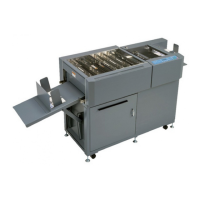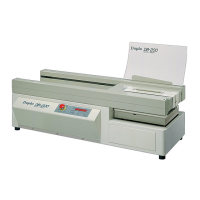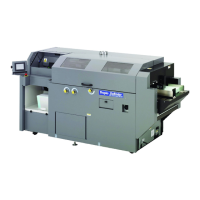What to do if my Duplo DC-6 Binding Machine shows 'Cover open'?
- KKayla CummingsAug 3, 2025
If your Duplo Binding Machine indicates that the cover is open, make sure to close the top cover and the front cover. Also, ensure that the perforation unit or the cover is correctly installed.








